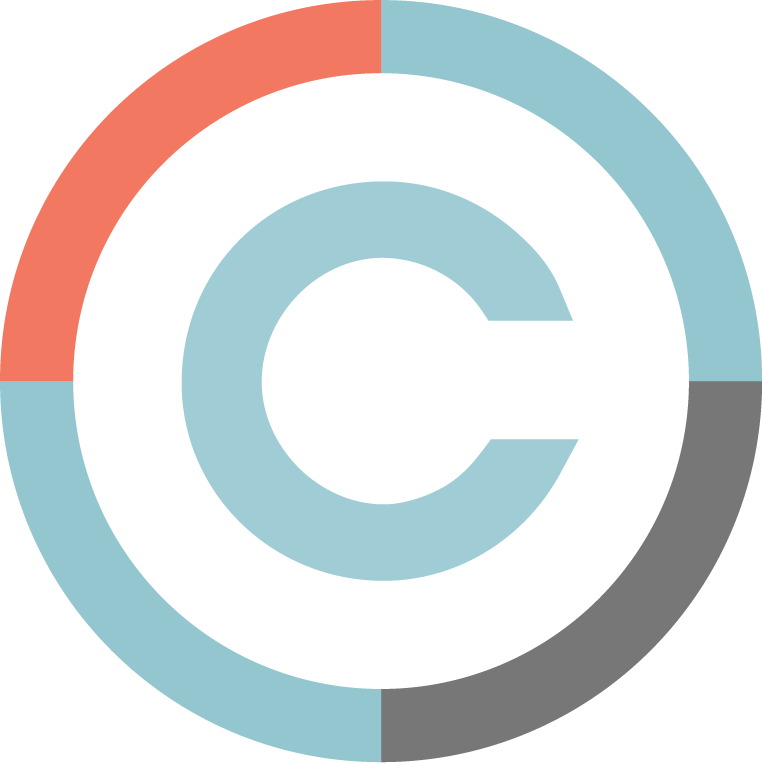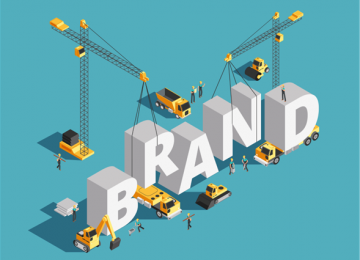What’s Working in B2B Marketing in 2025? 5 Trends Defining B2B Success

If your business sells to other businesses (aka: B2B), and you’ve found yourself navigating shifting buyer behavior, rapid tech advancements, and tighter budgets — we’re here to tell you that you aren’t alone. But as we approach the halfway point of 2025, it’s worth stepping back for a moment to catch our breaths and reflect on how B2B marketing has continued to evolve, and what it will take to remain successful. We’re taking a deeper look at which trends and tactics are moving the needle for businesses and providing actionable tips to help you keep pace in what often feels like a never-ending race. 1. Account-Based Marketing (ABM) Continues to Deliver Measurable ROIAs B2B marketing continues to evolve, the emphasis on targeted, data-driven approaches like ABM is expected to grow. (Think of this as the 80/20 rule, as applied to your business.) By focusing on high-value accounts and delivering personalized experiences to those accounts, ABM enables companies to allocate resources more efficiently and achieve better alignment between sales and marketing teams. It’s a win-win situation for businesses and their customers. While ABM is far from a new marketing concept, advanced technology is now allowing for the rise of hyper-targeted campaigns using real-time intent data. The key is to focus your marketing and sales efforts on delivering highly relevant content and solutions to a small number of accounts, rather than casting a wide net. This concentrated approach has the potential to improve engagement, shorten sales cycles, and increase value for your customers. Actionable Tip: Start small by identifying ten to twenty high-value target accounts that closely match your ideal customer profile (ICP). Use a tool like LinkedIn Sales Navigator to gather firmographic and intent data. Then, work with your sales team to develop customized outreach strategies—this might include personalized email sequences, tailored LinkedIn content, or account-specific landing pages.
2. AI Is Powering Personalization, Automation, and AEOIt’s quickly becoming a universal truth that AI is inescapable. While it’s causing one of the biggest disruptions in the marketing world, those who are embracing AI and learning how to use it to their advantage are already coming out ahead of those more reticent to change. Industries in the B2B space are no exception. In fact, it’s largely thanks to AI that the ABM strategy discussed above has become even more successful. Tasks like lead scoring can now be automated, and campaign patterns can easily be identified for better optimization. More personalized marketing is possible thanks to AI, including the personalization of content like landing pages, ads, and emails. AI is also powering instant proposal generation and real-time performance reports, freeing up teams to focus on strategy and creative execution rather than manual tasks. Another major shift in 2025 is the rise of Answer Engine Optimization (AEO)—an evolution of traditional SEO that reflects how many B2B buyers are finding information. With more users relying on AI-powered search tools, voice assistants, and chatbots for fast, conversational answers, optimizing your content for direct, structured responses – as opposed to just single keywords or long- and short-tail phrases – is now essential. Ranking on Google still matters—but it's also about becoming the source AI turns to for authoritative, relevant responses. Implementing AEO allows you to position your brand to meet buyers exactly where—and how—they’re searching. How to Implement AEO Into Your B2B Marketing StrategyLet’s assume you’re a local insurance agency called ABC Inc. offering different types of business insurance. Whereas previously, you’d want to ensure your website was regionally optimized for short keywords or phrases like “commercial auto insurance,” AEO calls for a shift toward providing full, conversational answers to common questions your audience is asking. For instance, instead of just listing “business insurance” as a service, you might create a clearly structured FAQ that answers: “What types of business insurance does ABC Insurance offer?” with a response like: “ABC Insurance offers commercial auto, general liability, workers’ comp, and property insurance, with customizable plans tailored to small and mid-sized businesses in [Your City].” By integrating full-sentence, question-and-answer-style content throughout your site—especially on landing pages, service descriptions, and blog posts—you increase the chances that AI-powered search tools, voice assistants, and chatbots will surface your business as the authoritative response. The more your content mirrors the way people ask questions, the more visible and useful it becomes in an AEO-driven digital landscape. Actionable Tip: If you aren’t already, now is the time to integrate AI-powered tools into your marketing processes to streamline operations, improve targeting, and boost lead conversion rates. For AEO, adjusting your website content is a great way to start. Prioritize clear, concise answers to common buyer questions, using formats like FAQs or bullet points.
3. B2B Website Design Prioritizing UX and Mobile OptimizationMaybe it goes without saying, but we’re going to say it anyway: Enhanced user experience and mobile optimization continues to matter to both B2C and B2B customers. B2B buyers expect the same seamless digital experiences they’re used to as consumers—fast, intuitive, and responsive on any device. Whether researching vendors on a desktop at work or viewing a case study on their phone after hours, buyers won’t tolerate clunky navigation or slow load times. Clean layouts, simplified menus, methods to engage or act, and responsive interfaces aren’t just nice to have—they’re essential to staying competitive and credible in a digital-first buying journey. For B2B companies, optimizing UX isn’t just about aesthetics—it directly impacts lead generation. A well-designed website keeps visitors engaged longer, reduces bounce rates, and guides your prospects smoothly through the funnel, ultimately improving conversion rates and sales outcomes for your business. Actionable Tip: Ensure your website is responsive and optimized for all devices. Work with experienced website designers (like our team at Cowley!) to craft personalized, streamlined experiences for your target audience.
4. Outsourcing Your CMO Is a Smart B2B Growth StrategyIn 2025, the rise of the Fractional CMO model is reshaping how growing businesses approach executive marketing leadership. Rather than hiring a full-time Chief Marketing Officer, companies are bringing in seasoned marketing strategists on a part-time or contract basis — or partnering with experienced marketing agencies to lead high-level initiatives. This approach is especially attractive for startups, nonprofits, and mid-sized B2B organizations that need expert guidance but can’t justify—or afford—a six-figure salary. A Fractional CMO offers a flexible solution, providing strategic oversight and decision-making support tailored to your company’s current growth stage. These outsourced CMOs or agency partners often take the reins on core responsibilities like brand strategy, campaign development, and data-driven marketing optimization. They act as a bridge between vision and execution—aligning marketing efforts with business goals, managing internal or external teams, and ensuring that campaigns are not just creative, but also measurable and effective. If you’re navigating rapid change or just seeking to scale efficiently, outsourcing a CMO can offer the kind of leadership that accelerates growth without the long-term commitment of a full-time hire. A fractional CMO can also bring objectivity and knowledge of outside resources to align with fast-changing goals, further extending your marketing department’s capabilities and capacity, even if just on a plug and play or short-term basis. Actionable Tip: Consider outsourcing a CMO or partnering with a marketing agency to drive results, especially if your business lacks in-house marketing leadership, the budget to hire a full-time CMO, or is in need of marketing planning and strategy support.
5. Content Marketing That Focuses on Quality Over QuantityB2B content marketing is no longer about flooding the internet with posts—it’s about producing high-quality content with clear strategic intent. Marketers are shifting their focus towards depth over volume, investing in formats like long-form thought leadership, in-depth case studies, opinion pieces, and proprietary research that offer real value to their audience. These formats not only build credibility but also speak directly to complex buyer needs, positioning your brand as a trusted advisor rather than a faceless vendor. The goal isn’t just visibility—it’s influence. Social media, particularly LinkedIn, continues to be a powerful engine for content distribution and executive positioning. Beyond having a company page, businesses are embracing employee advocacy and encouraging team members to build their personal brands—amplifying reach and trust through authentic, peer-level engagement. A successful B2B content strategy today includes aligning topics with client pain points and industry shifts, ensuring that every piece serves a purpose in the buyer journey. Actionable Tip: Create content that speaks to your audience's pain points and offers practical solutions, rather than simply filling up your blog or social media channels with generic posts. Start by talking to your sales team—they’re closest to customer concerns and can help surface topics that will truly resonate.
It’s Time to Review Your B2B Marketing StrategyAs we prepare to cross the midpoint of 2025, one thing is clear: success in B2B marketing hinges on intentional, strategic action. Whether it's embracing AI-driven personalization, optimizing your website for seamless user experiences, or leaning into thought leadership through high-quality content, the businesses that are winning are the ones willing to adapt—and invest—in what works. These trends aren’t just fleeting headlines; they’re foundational shifts that are shaping the future of how B2B companies connect, convert, and grow. If you’re looking to assess where your marketing stands today—and how to evolve it for tomorrow—Cowley is here to help. From custom website design and fractional CMO support to holistic content and social media strategies, our team specializes in building clear solutions that cut through the noise, align with your goals, and drive results. Let’s talk about how we can move your marketing forward. |
 Stay InTOUCHSign up here to get our monthly newsletter and blog updates. |





